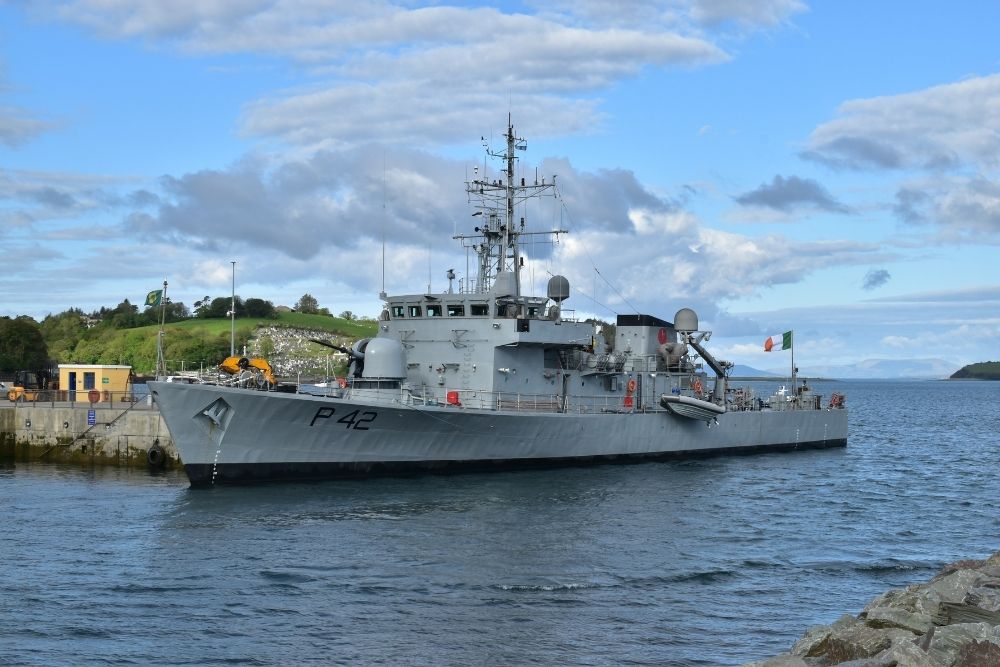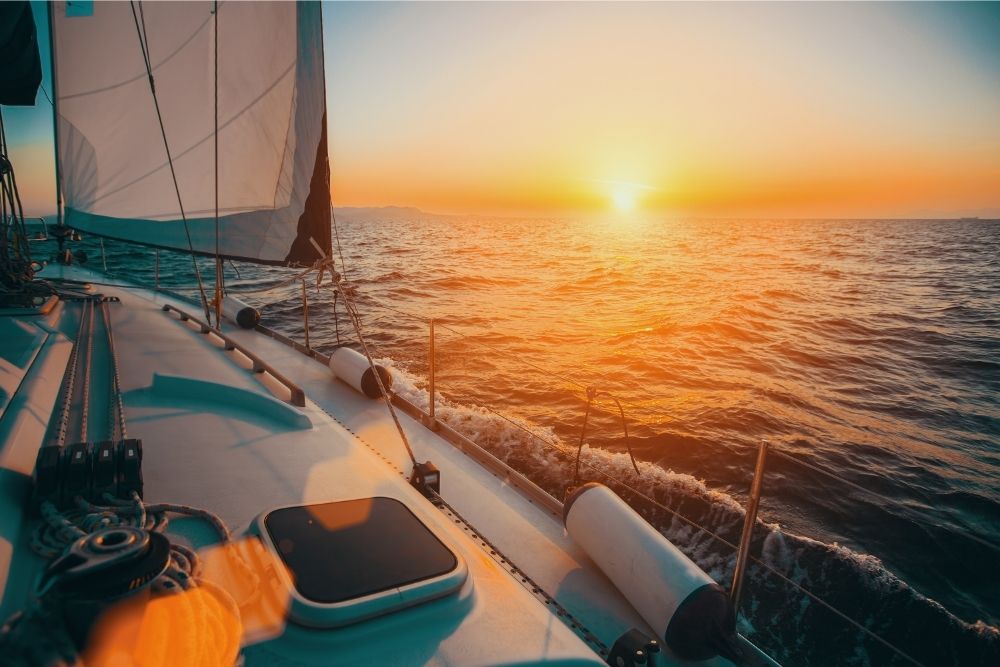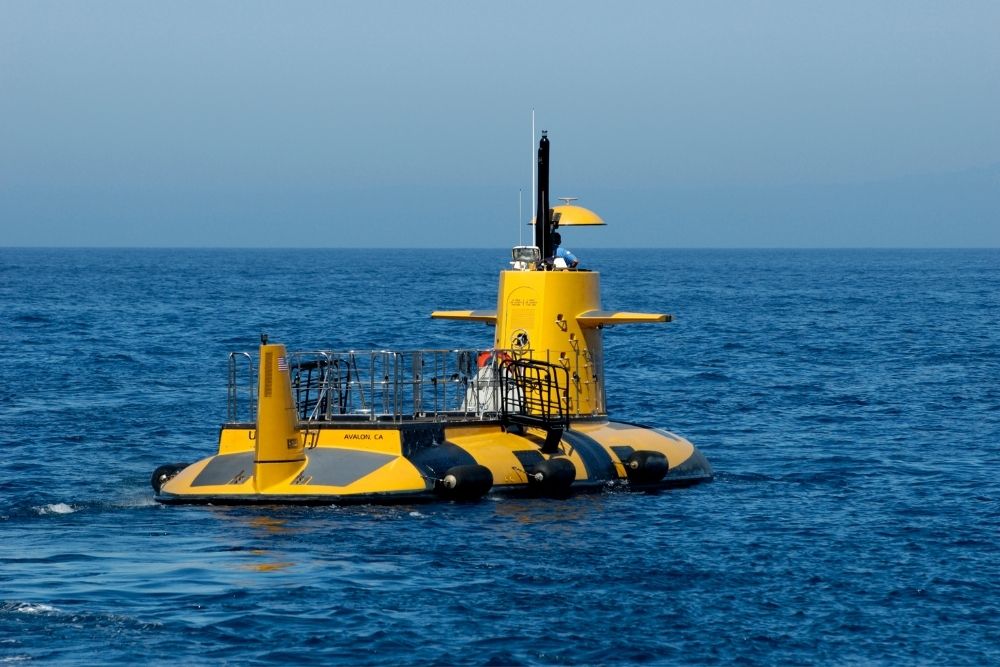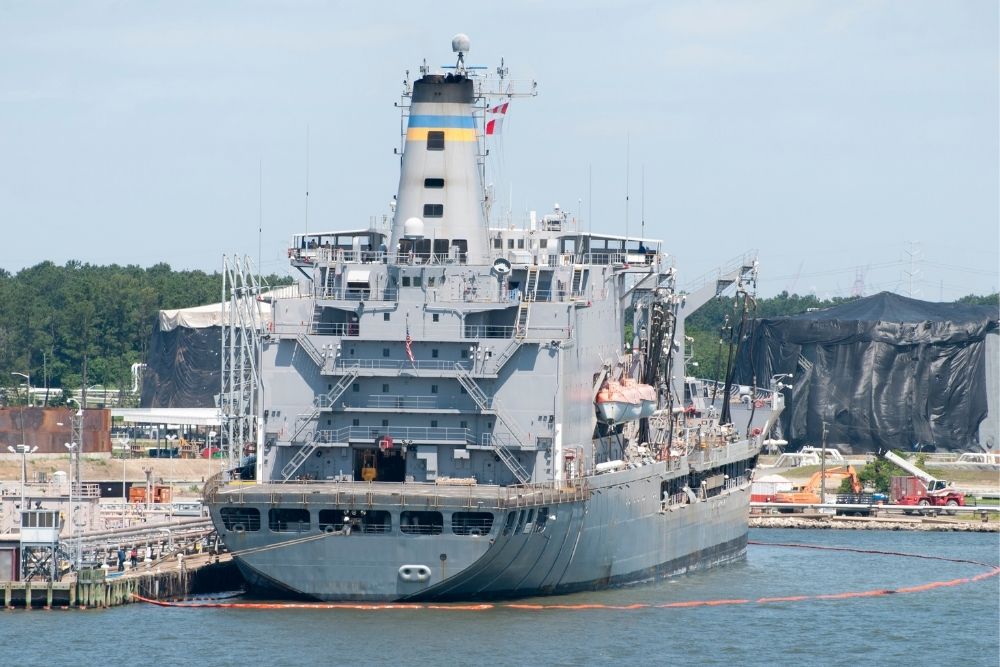You may have seen a boat with the title “ss”. For those who do not know, this is a common ship prefix. What are ship prefixes? What do they mean? This article will explain the meaning of the main ship prefixes.

What Are Ship Prefixes?
Ship prefixes are a collection of letters that are used to help identify the ship. These prefixes will be put in front of a ship’s name, allowing for easy identification.
The ship can be used to denote a variety of factors, such as the use of a ship, the propulsion method, or who the ship is owned by.
Nowadays, these prefixes are primarily used for governmental ships. Though civilian ships can still have prefixes, it is becoming increasingly uncommon for them to have prefixes.
SS
The prefix “SS” refers to a steamship. This can often be a single-screw steamship. These are ships that have steam engines. In addition, these ships utilize at least one propeller to travel through water.
Famous examples of SS ships include the SS Great Britain, a passenger ship that has since been transformed into a museum. This ship was designed by the iconic engineer Isambard Kingdom Brunel.
It was launched in 1843, making it the largest ship at the time. The first ship of this kind was the SS Archimedes, which was made in 1839.
You might also have heard of the SS Anne, a ship in the Pokémon franchise.
HMS
This is one of the most well-known prefixes. Used mainly in the United Kingdom, this prefix designates a royal ship. It stands for either “Her Majesty’s Ship” or “His Majesty’s Ship”, depending on the gender of the monarch.
Most of these countries are part of the Commonwealth. “HMS” may also be used in relation to submarines.
Though it is primarily used in the UK, other countries use this prefix to refer to royal ships. If not, some countries will have a different variation of the prefix in their own language. For instance, Germany uses the prefix SMS to refer to their royal ships.
The term was first used in 1789 when referring to the HMS Phoenix. Other examples of HMS ships include HMS Belfast, HMS Victory, and HMS Queen Elizabeth.
MS or MV
Next, this prefix represents motor ships. However, these ships can also be used under the prefix MV, meaning motor vessel. These ships use internal combustion engines. For the most part, these engines will be diesel engines.
MT
This prefix is used to refer to motor tankers. Also known as oil tankers, these ships are powered by a self-propelled tanker. Oil tankers are frequently used to transport products. These products can include their namesake, oil.
SY
The SY prefix is noteworthy because it can be used to represent two different types of ships. This can be either sailing yachts or steam yachts. This can make the prefix somewhat confusing, as these two ships are entirely different.
While sailing yachts simply use the sail for propulsion, steam yachts also contain a form of steam propulsion. This is used alongside the sails in steam yachts, improving their propulsion.

RMS
Standing for “Royal Mail Ship”, this prefix is reserved for ships that transport post or mail for Royal Mail. This is the primary postal service in the United Kingdom. The prefix was originally used in 1840.
An interesting technicality is that ships can only be labeled as RMS vessels if they are still pledged to transport mail. If they do not satisfy this condition, these ships will go back to being called “SS” ships.
There are many iconic ships that have been given the RMS prefix, inducing the Titanic, the Queen Mary, and Carpathia. In fact, not many people know that the Titanic was an RMS ship.
LB
Though you may have assumed that LB referred to lifeboats, it actually stands for liftboats. Liftboats are ships that are both self-propelled and self-elevating. They are deployed for exploration and construction purposes.
AE
This prefix stands for ammunition ships. These auxiliary ships are used to transport crucial military supplies, namely ammunition. Ammunition ships are configured to safely hold this equipment.
Despite the name, ammunition ships are not just used to transport missiles or other weapons. These supplies can be used for food or fuel.
Prior to the 1980s, ammunition ships regularly used asbestos in their construction. This was before it was common knowledge that asbestos was dangerous for humans to inhale.
One of the first and most iconic ships is the Pyro. Known as AE-1, this ship was laid down during the First World War in August 1918. Pyro was awarded for its participation in World War Two with a battle star.
AHT
The next ship on our list is the AHT, standing for Anchor Handling Tug. These ships are used to control anchors. AHTs are primarily used on oil rigs. These durable ships are constructed to withstand rough sea conditions.
DB
Derrick barges are the ships with the prefix DB. What is a derrick barge, you may ask? These vessels are used to maintain oil derricks. They tend to be very large and expensive.
CS
This prefix is mainly used for cable ships, though it can also be used to stand for container ships. Cable ships have quite a specific purpose. As the name suggests, they are used to transport cables. They will also be used to install these cables underwater.
Meanwhile, container ships are a form of cargo ships. These container ships provide a vital duty, carrying intermodal containers across the world.
DSV
This is another prefix that can be used for two different variations of ships. DSV can either represent diving support vessels or deep-submergence vehicles. Diving support vessels began to emerge in the 1960s.
They are used for the purpose of providing support to professional diving operations. However, deep-submergence vehicles are self-propelled submarines.
These ships can either be used for research or rescue purposes. Rescue ships are often used to locate and save the crew of a sunken ship. Both types of deep-submergence vehicles are used by many navies, though primarily by the United States Navy.

FPSO
Next, this acronym stands for floating production storage and offloading. These floating ships are used by the oil and gas industries. They have important jobs, such as keeping oil. In addition, they have the role of processing hydrocarbons.
NB
A little different from the other vessels on this list, NB is the prefix attached to narrowboats. A type of canal boat, narrowboats are used mainly in the United Kingdom.
These narrowboats are designed to be long and thin, allowing them to maneuver through narrow bodies of water. These boats are popular among civilians. While they were used considerably during the Industrial Revolution, they are now used as homes by everyday people.
You will often see ornately decorated narrowboats in Britain.
NRV
NRVS, or NATO Research Vessels, are specifically designed for scientific research. This research is conducted by NATO, which stands for North Atlantic Treaty Organization. This important organization has been around since 1949.
PS
PS stands for paddle streamers. These paddle steamers were replaced by screw-propelled ships towards the end of the 19th century. Nowadays, their usage is not very widespread. However, they can be used for tourist purposes.
YT
This prefix represents yard tug ships. There are different variations of the yard tug, such as the valiant-class harbor tug.
YW
This prefix might be harder to guess. YW actually stands for water barge, specifically the self-propelled variety. These ships are mostly deployed for transporting items and goods.
TEV
Next, TEV stands for turbo-electric vessel. They were built during the 1910s by the United States Navy but were expensive to run and produce. However, they were also used during the Second World War.
TIV or WTIV
Either standing for turbine installation vessel or, more specifically, wind turbine installation vessel, ships with these prefixes are used to fit wind turbines in offshore locations.
USS
Last on this list, USS stands for “United States Ship.” This prefix is not used for every ship in the United States. Instead, it is used for ships that belong to the Navy of the United States.

Frequently Asked Questions
What Is The Prefix For A Cruise Ship?
Interestingly, there is no standard way of referring to a cruise ship in terms of prefixes. Consequently, some cruise ships will merely use their first names as prefixes. An example of this is that Disney cruise ships use the prefix “Disney.”
Can I Give My Ship A Prefix?
Toady, most civilian ships are not designated prefixes. While you can give your ship a name of your choice, it is unlikely to be recognized by a prefix that you have chosen. Instead, the prefix will depend on what type of ship you have.
Conclusion
Ultimately, the various ship prefixes can be very confusing if you are unfamiliar with them. Fortunately, this guide should help you to cultivate a deeper understanding of them. If you come across a prefix that you are unaware of, feel free to consult the list above
